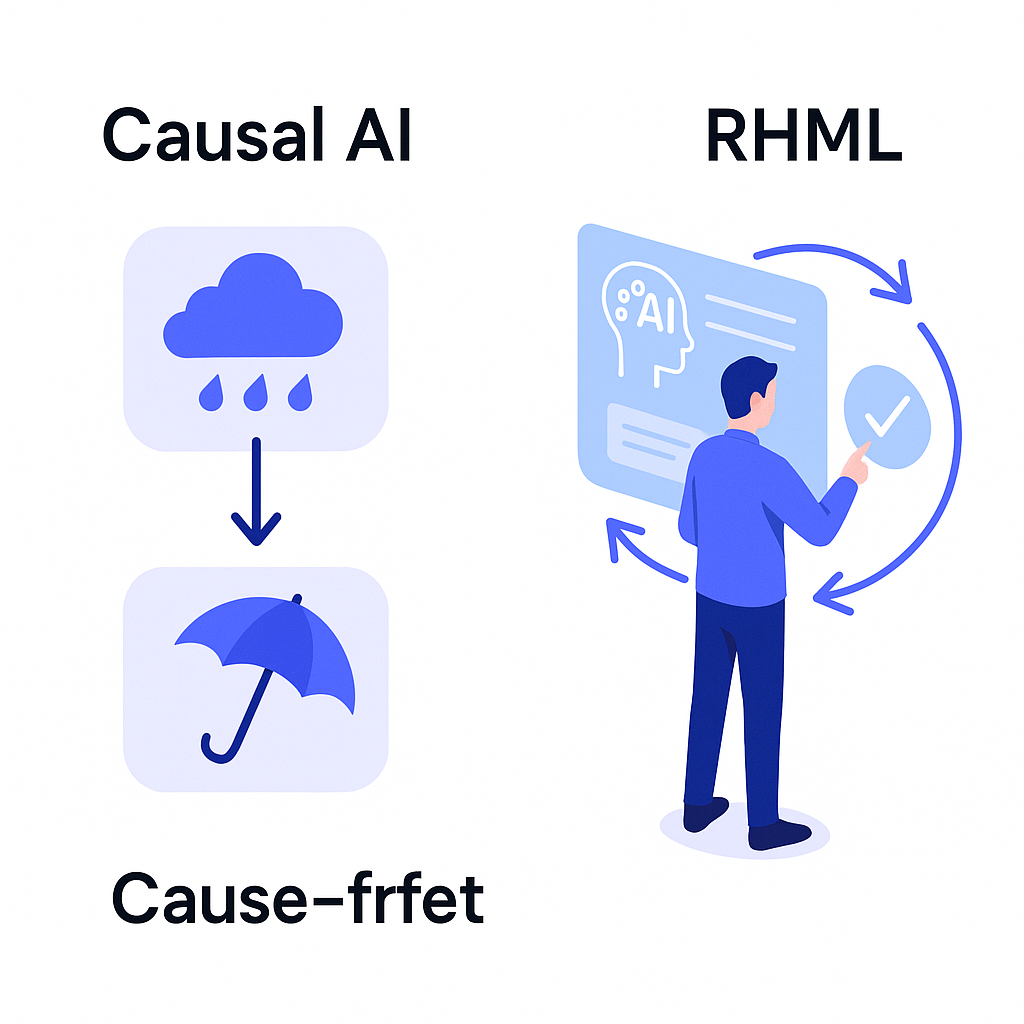434
1. What is Causal AI?
Causal AI is an artificial intelligence type that goes beyond pattern recognition to understand the reasons behind events.
- Example: Regular AI might spot a link between umbrella sales and rainy weather.
- Causal AI takes it a step further and figures out that rain drives people to buy umbrellas.
This knack for spotting cause-and-effect links helps companies and scientists make smarter choices, not just forecasts.
2. Why is Causal AI Important?
- It makes AI more dependable because it functions even when circumstances shift.
- It has applications in fields like healthcare, finance, and policy-making where understanding the real cause is crucial.
- It helps organizations steer clear of errors that can occur when they depend on correlations.
3. What is RHML (Reciprocal Human-Machine Learning)?
RHML means that humans and AI systems gain knowledge from each other in an ongoing cycle.
- The AI proposes an answer.
- A human reviews it, fixes it, or provides input.
- The AI applies that input to enhance future answers.
Example: A teacher uses an AI tool to grade tests. The teacher corrects some errors. This helps the AI learn. As a result future grading becomes more precise.
4. Why Is RHML Important?
- It has an effect on AI systems’ intelligence over time.
- It allows humans to stay in charge, which is key for safety and ethics.
- It creates trust because the AI lines up better with human aims.
5. How Do Causal AI and RHML Link?
Both aim to make AI systems sharper more flexible, and more reliable:
- Causal AI enhances comprehension and logic.
- RHML boosts the exchange and growth between humans and machines.
Combined, they shift AI from a mere forecasting instrument to a teammate that grasps, grows, and adjusts.
